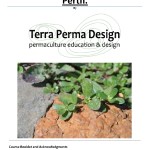Biodynamic Gardening by The Biodynamic Agricultural Association
Historical origin
The biodynamic farming and gardening movement began in 1924. It was inspired by a series of lectures given by Rudolf Steiner (1861-1925) the Austrian philosopher, scientist and social reformer whos spiritual research has also influenced education, medicine and the arts. Today biodynamic husbandry is practiced in more than 40 countries and in all climate zones. It is widely acknowledged as one of the most sustainable organic approaches in existence.
Garden as in organism
Fundamental to biodynamic gardening is the recognition that all life is interconnected. Each plant, each insect, the rocks below, the moving clouds and the stars above, all form part of the living organism of our planet. Every piece of land, including the smallest garden can be considered a microcosm of this greater whole. The biodynamic gardener works as an artist within this context.
Amazon #ads
Feed the soil with life
Instead of simply supplying the plant with nutrients, the biodynamic gardener aims to bring such life and vitality to the soil that the plants themselves are eager to grow and find what they need.
Compost – the heart of the garden
The farmer enlists the help of domestic animals to intensify soil vitality. The gardener achieves this through intensive composting work. The heart of the biodynamic garden is its compost heap. All accumulating organic waste materials can be skilfully transformed (with only a small amount of brought in animal manure) into humus-rich compost with the help of what are known as biodynamic compost preparations.
Compost preparations
The compost preparations are made from six well known medicinal plants – yarrow, chamomile, stinging nettle, oak bark, dandelion and valerian. Their specific properties are enhanced and made effective for soil life during the course of a unique process of fermentation. Some of the herbs require a sheath made of certain animal organ materials. These serve as catalysts for bringing about the required process.
When they are ready these humus-like substances are added to the composting material in minute amounts and radiate their effects throughout the heap. These preparations help to guide and regulate the decomposing and humus forming processes in the soil and make plant nutrient substances (sulphur, potash, nitrogen, calcium, silica, phosphorous) available in precisely the form needed by the plant for healthy growth.
Ecological balance
Further tools available to the biodynamic gardener include more widely recognised ecological interventions such as companion planting. Every plant species has a different requirement and by carefully choosing the right growing companion or position in the rotation, optimum conditions can be created. Animal life too has its place and by paying attention to such relationships, pest and disease problems can be much reduced.
Influencing growth
Two further biodynamic preparations are used to stimulate and harmonise plant growth. Known respectively as ‘Horn Manure’ and ‘Horn Silica’, these two spray preparations act in a polar way to one another. Horn Manure is specially prepared cow manure and Horn Silica finely ground and prepared quartz meal. Both undergo a fermentation process in a cow horn. Before being applied they are dissolved in water and stirred rigorously for one whole hour. Horn Manure is sprayed towards evening directly on the soil prior to sowing and planting. It encourages healthy root growth and helps the plant to access what it requires from the soil. Horn Silica is sprayed early in the morning as a fine mist on to the growing plant. It helps to stabilise plant metabolism and enhance the qualitative development of the crop.
Planting calendar
Awareness of the influences coming from the moon and planets provides a further opportunity for the biodynamic gardener to fine tune the gardening operation. Every month the moon passes through each constellation of the zodiac in turn. As it does so the influence of each is emphasised more strongly. Since ancient times, the different constellations have been related to the four elements and these in turn to the different parts of the plant (earth-root, water-leaf, air-flower, fire-fruit). The Biodynamic Sowing and Planting Calendar, produced each year, indicates most auspicious days for, planting, cultivating or harvesting specific crops.
Nutrition for the senses
Beauty and artistic harmony is another less tangible quality that is of enormous benefit to a biodynamic garden. Tidiness but also awareness for position is important. A well placed sculpture, perhaps a water feature or plant combinations chosen for their scent and colour provide nourishment for the senses.
Biodynamic Agricultural Association,
Painswick Inn Project,
Gloucester Street,
Stroud,
Cloucestershire,
GL5 1QG
Tel: 0845 345 8474
email: office@biodynamic.org.uk
www.biodynamic.org.uk






